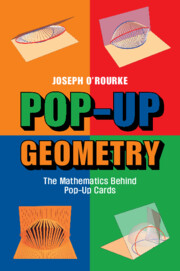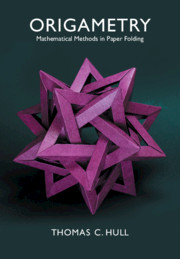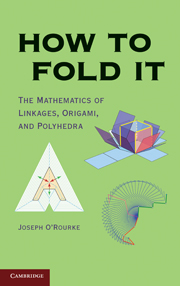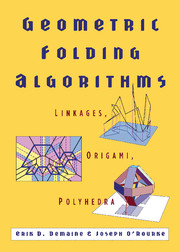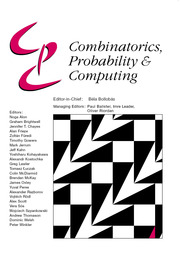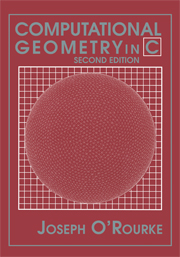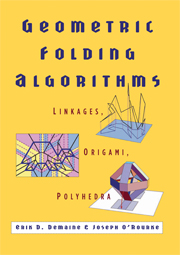Pop-Up Geometry
Anyone browsing at the stationery store will see an incredible array of pop-up cards available for any occasion. The workings of pop-up cards and pop-up books can be remarkably intricate. Behind such designs lies beautiful geometry involving the intersection of circles, cones, and spheres, the movements of linkages, and other constructions. The geometry can be modelled by algebraic equations, whose solutions explain the dynamics. For example, several pop-up motions rely on the intersection of three spheres, a computation made every second for GPS location. Connecting the motions of the card structures with the algebra and geometry reveals abstract mathematics performing tangible calculations. Beginning with the nephroid in the 19th-century, the mathematics of pop-up design is now at the frontiers of rigid origami and algorithmic computational complexity. All topics are accessible to those familiar with high-school mathematics; no calculus required. Explanations are supplemented by 140+ figures and 20 animations.
- Motivates what is usually abstract mathematics by showing its application to physical structures in pop-up constructions
- Connects simple mathematics to both classical mathematics and to the frontier of research in geometry
- Provides more than 40 exercises graded into three classes of difficulty - Practice, Understanding, and Challenge - so that readers can test themselves and explore beyond the text. All exercises are solved in the back of the book
- Separates out explanations of mathematical topics into boxes throughout the book, making it easy for those needing a review of those topics to get up to speed, and those familiar with the mathematics to skip the section
- Includes a table of mathematical symbols, making it easier to jump into a chapter out of sequence
- 140+ color figures in the book and more than 20 animations on the author's website illustrate the intricate pop-up card dynamics
Reviews & endorsements
'What a delight! Finally, a book that explains the geometry behind pop-up cards in a simple and straight-forward way with loads of illustrations and web animations to help. I look forward to sharing this gem with my own students.' Thomas Hull, Western New England University
'Pop-Up Geometry is a beautifully written book. This book focuses on the aspect of pop-up structures of computational origami, a recent trend in computational geometry. Once you flip the pages, you will find various colorful figures. These figures nicely give you inspirations of paper art and ideas of the mathematical background of pop-up paper sculptures.' Ryuhei Uehara, Japan Advanced Institute of Science and Technology
'There are many books about pop-ups, but only one about the mathematics of how they work. From analyzing standard pop-up mechanisms to advanced computational design, geometry master O'Rourke gives an excellent tour of this wonderful world.' Erik Demaine, Massachusetts Institute of Technology
'This text can readily be used as a supplement to a geometry course. I also see this book serving as a foundation for a multi-disciplined extracurricular activity called 'Pop-Up Card Design'. This activity would encourage students interested in enhancing their skills in English, Mathematics, and Art as they work together in a cooperative effort to produce Pop-Up cards or Pop-Up books.' Tom French, MAA Reviews
'Complete with vibrantly colored graphics, companion animations that depict the motion described in the book, and templates for the reader to make the pop-up creations the book is analyzing, this book makes it easy for the reader to engage with the material they are learning.' Katelynn Kochalski, Notices of the American Mathematical Society
'I can envision using this book as a text for a one-semester undergraduate interdisciplinary course that interweaves theory with physical constructions. Students would leave the course with a heightened sense of three-dimensional geometry, an appreciation of the creative potential of mathematics, and a portfolio of pop-ups to boot … This short (129 pages) book is engaging and inspiring, and it opens up a world of possibilities. It may even suggest a fresh and largely unexplored mathematical field: pop-up design and theory. It is going to generate a lot of activity, research, and design.' Richard H. Hammack, The Mathematical Intelligencer
'A thought-provoking treasure trove of fun and intellectually challenging revelations that is accessible for a large mathematical audience.' Physics Book Reviews
Product details
March 2022Paperback
9781009096263
175 pages
228 × 152 × 8 mm
0.24kg
Available
Table of Contents
- Preface
- 1. Parallel Folds
- 2. V-Folds and Rotary Motion
- 3. The Knight's Visor
- 4. Pop-up Spinner
- 5. Polyhedra: Rigid Origami and Flattening
- 6. Algorithms for Pop-Up Design
- 7. Pop-Up Design is Hard
- 8. Solutions to Exercises.

